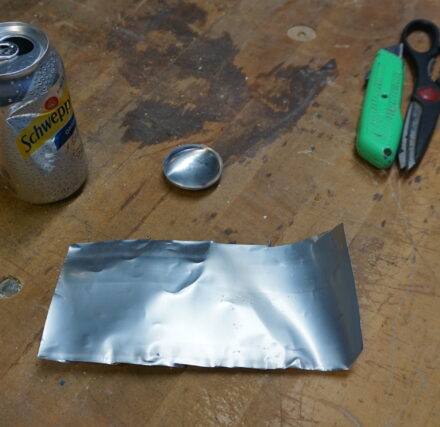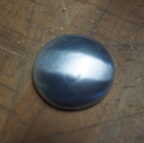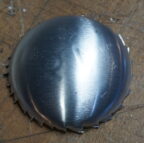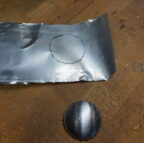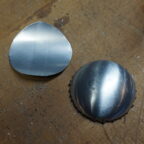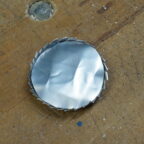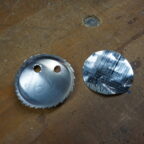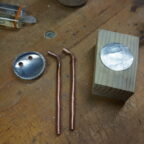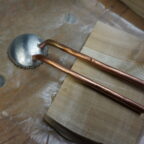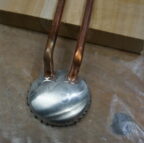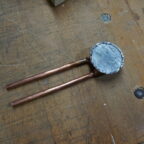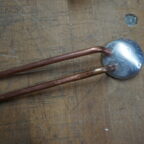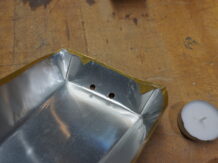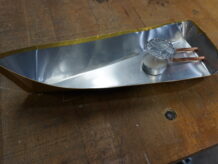May 21, 2020
Putt Putt Boats
With a few shop tools and some time, build yourself one of these classic steam powered toys
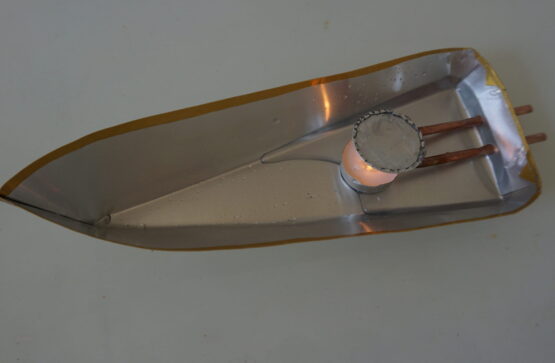
This weekends project will definitely take some patience and careful work and is more of a "grown-ups" project than a kids activity - there are lots of blades and sharp edges! Also, always take extra precautions (gloves and safety glasses) and read and follow all safety instructions when using epoxy. Even though this project is a bit more challenging than some of our recent posts, it is a very cool engineering experiment and well worth the effort. You can try it at home with the contents of your recycling bin and a few extra tools and supplies. The very first putt putt (sometimes also called "pop pop" boat) patent was filed in 1891 in the U.K., but it is likely the toy was around for some time before it occurred to anyone to patent it. These boats can be a little fussy - the airtightness of the boiler is especially important - so Captain Nat the steam engineer will be proud if you can get this one to work! We can't wait to see what you end up with so don't forget to tag, share, and send us photos and videos.
Materials:
Aluminum can
Sandpaper
Scissors
Drill and drill bits
5 minute epoxy
Pliers
1/4" metal tubing
Small candle or tea light
Soda bottle, milk carton, square tins, wood or styrofoam (for the hull)
Assembling the boiler:
- Use a box cutter or work shears to cut the top and bottom off of the soda can. Keep the bottom (a concave circle), and cut down the length of the side to get a flat sheet. Be careful! And consider wearing work gloves when handling the cut aluminum; the can edges will be very sharp.
- Trim the bottom of the can so it is just the inner concave part leave about an 1/8" extra "lip". Cut perpendicular slits all the way around the 1/8" lip.
- Trace the can bottom onto the flat part of the can and cut out the circle.
- Sand both sides of the flat circle then bend the circle several times so it is no longer flat. This is what will allow it to "pop" when it is heated.
- Take two lengths of 6 inch tubing and bend them into a L shape. (We used some left over 1/4" soft copper, but any metal tubing will work)
- Mark the concave part of the can and drill two holes into the can for the tubing
- Insert the tubing into the holes and epoxy them in place. To make sure the tubing is flush with the inside of the can, support it with a block of wood covered with plastic wrap or wax paper while the epoxy cures.
- Once the epoxy cures, take the circle you cut from the flat sheet and epoxy it into the top of the can bottom (now your boiler!), and bend the tabs you created by cutting the slits over. Crimp them in place using pliers.
- While the epoxy cures, build your hull. We used another soda can for this, but you could also use a milk carton, plastic soda bottle, styrofoam block, sardine tin, or anything you can come up with that will hold your candle and give you a transom to support your exhaust/intake tubes with... get creative!
- Drill two holes in the transom of your boat for the tubing to fit through. Insert your steam engine into the hull. Make sure that your boiler tilts up slightly when it is in place! This small adjustment will have a significant impact on your boiler's effectiveness.
- Fill up the tub or a large basin outside and prime the exhaust pipes with a little water. Place the candle under the boiler and light it, and fingers crossed, wait for your boat to start putt putting along!
Illustration from a patent application filed by Paul Jones in 1934 for a toy boat; image via Google Patents.
Click Images to view larger:
Here’s a video tutorial if you’d like a little more instruction:
How does it all work? It is a very simple heat engine. The tubes and boiler are primed with water. Then, the candle heats it up and turns it into steam, forcing it out the exhaust tubes. As the chamber is emptied, the boat is pushed forward by the steam exhaust, creating a tiny negative pressure system in the boiler. This then sucks water back up the exhaust pipes, the water heats up, vaporizes, and is ejected again. This cycle of drawing in and out in little spurts causes the boat to "putt putt" forward continually as water is drawn in and steam pushed back out!


